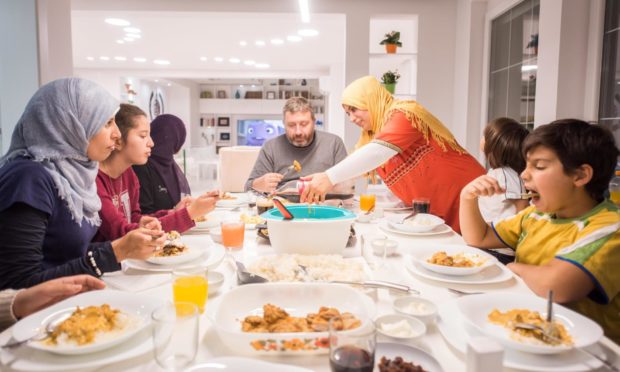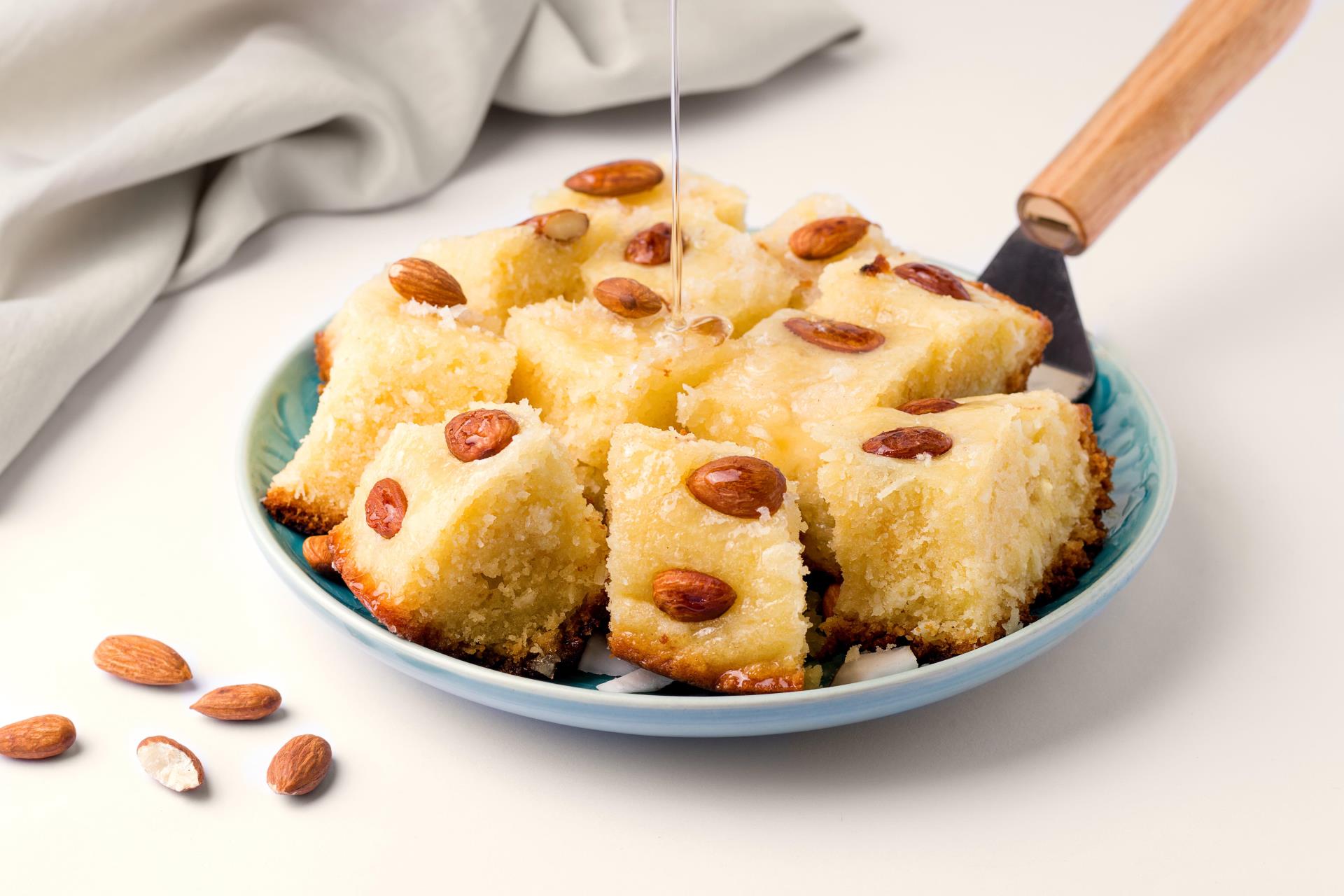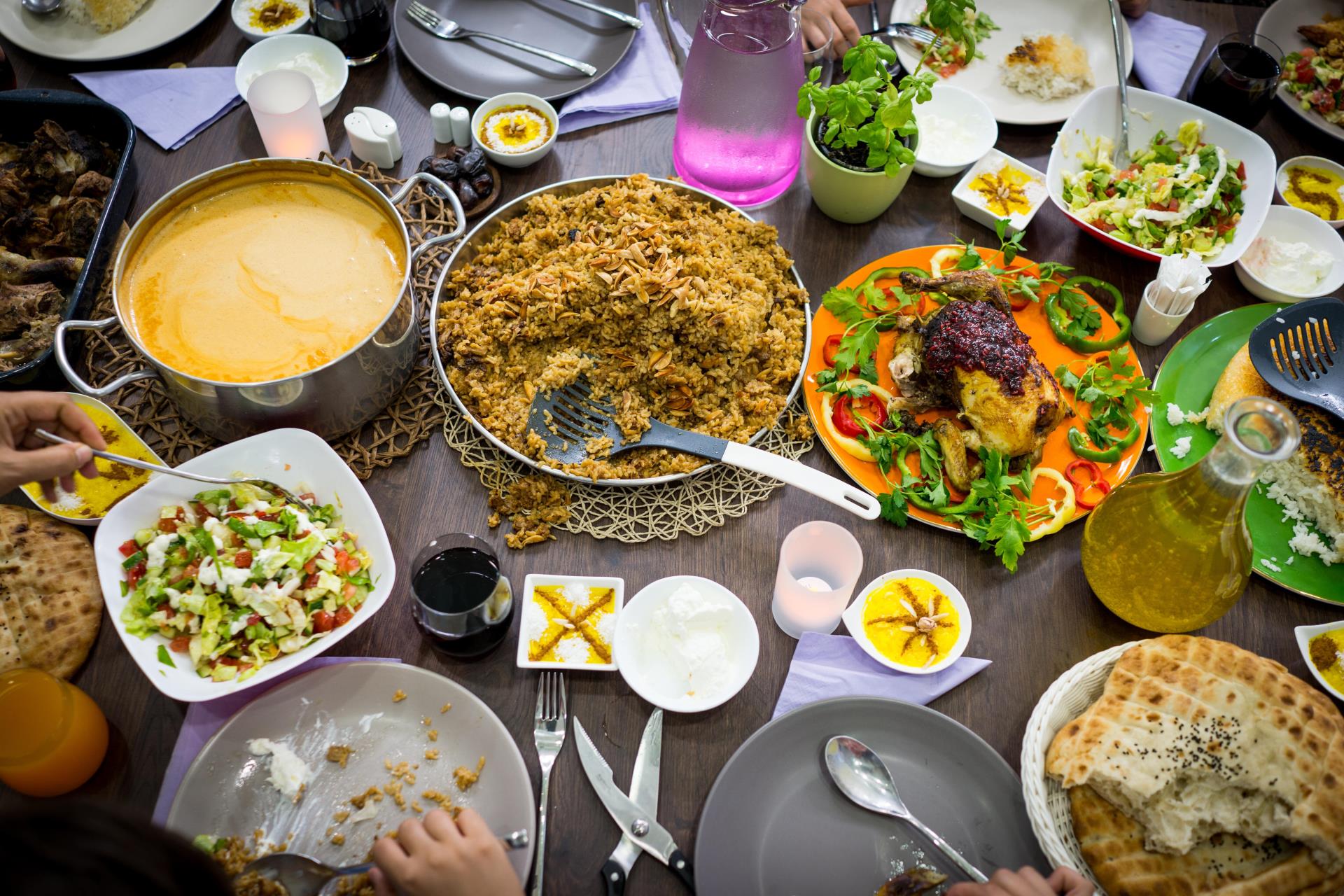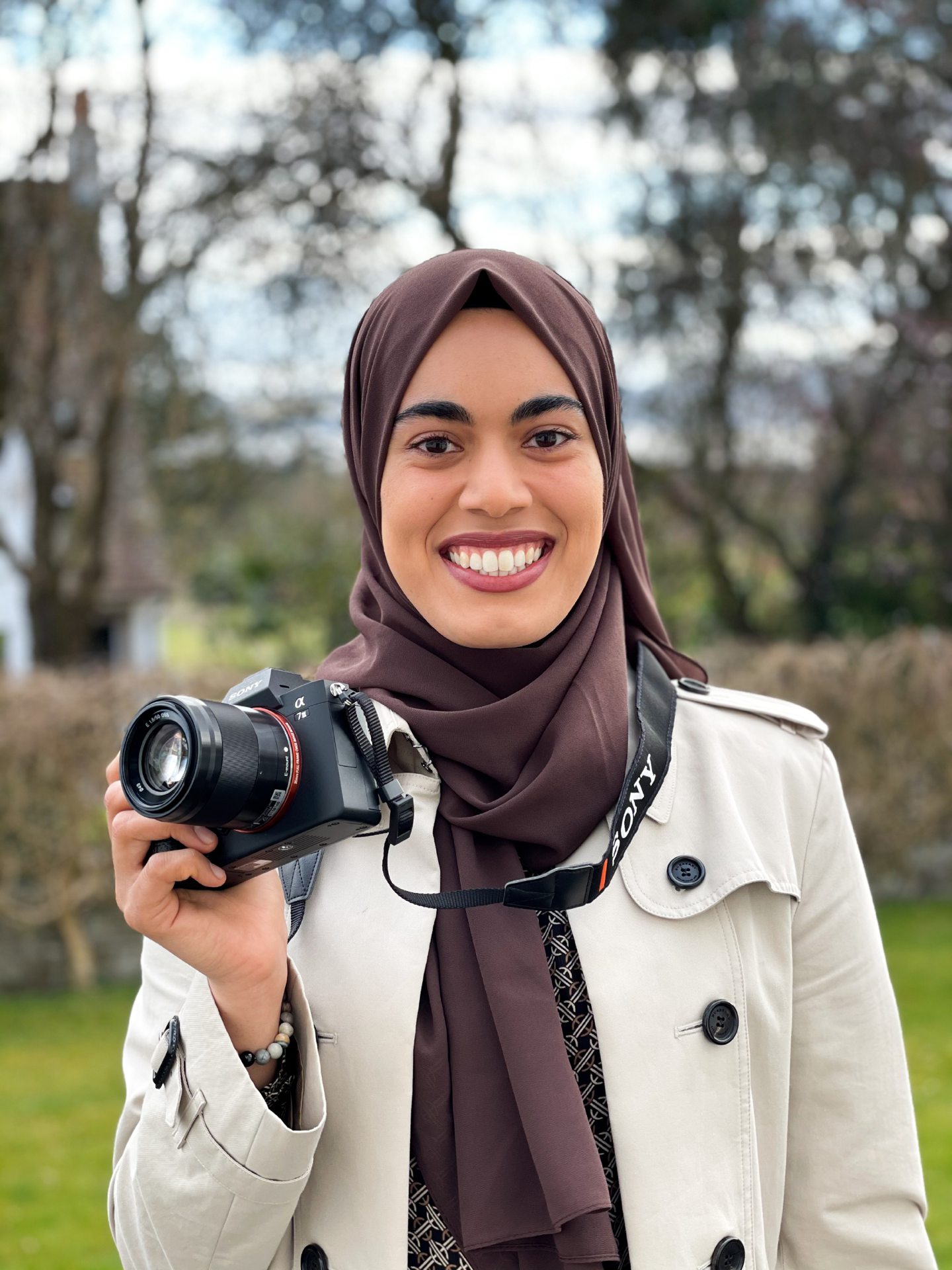Muslims across the world are celebrating the holy month of Ramadan which sees them fast from sunrise to sunset for 30 days.
The Islamic calendar is lunar, meaning that Ramadan falls from Monday April 12 to Wednesday May 12 this year.
Not eating or drink anything during daylight hours, Muslims will usually eat one meal – the “Suhoor” or “Sehri’ – just before dawn and the “Iftar” after sunset.
Usually family and friends would gather to share these meals together. However, due to the travel restrictions and other lockdown rules in place, this will be the second Ramadan Muslims have had to celebrate the occasion within their own households.
In Muslim culture, fasting has an important role in teaching patience, compassion and gratitude and is a reminder of those suffering from poverty and hunger. During this holy time, Muslims are encouraged to help the poor and those in need.
Dates are usually used to break the fast and one or three are usually consumed. A popular dish during Ramadan is the Chorba Frik, which is a traditional Algerian soup. It is prepared most days by Muslim families throughout Ramadan and is usually made with lamb or mutton. It is rich in flavour and boasts a wide range of fragrant ingredients in it, too.
Said to be from Turkish descent, there are various versions of the Algerian dish across the region of Algeria, and chicken or beef can be substituted in the recipe, depending on the region.
It is a great way not to get vital nutrients into the body, but to also replenish fluids as well.
Muslims are advised to eat slowly after fasting all day and soups and juices are a great way to allow the stomach time to process everything.
A popular sweet treat is “Qalb El Louz” which translates to “heart of almond” in English. It is a very sweet dessert that is made from layers of semolina and ground almonds and is flavoured with orange blossom water.
It is soaked in a sugary syrup and is presented with an almond on top of each slice. It is traditionally served with a cup of mint tea.
Perspective
Mariam Okhai, from Dundee, who writes on her blog The Behavioural Foodie, says Ramadan, while slightly hampered by coronavirus restrictions just now, is a time for community and an opportunity normally for families to get together.
“It’s a month of discipline, I would say. You are fasting for 29 or 30 days, generally 30 days. It started today and you fast from the twilight time, which is 3.40am in the morning right now in Dundee, and you will fast right up to 8.15pm. It is from twilight until sunset and after sunset you can eat,” she said.
“You should break your fast with a date and some water, then afterwards it’s how people feel about things. I generally try to eat a bit healthier.
“You eat once after sunset, Istaar, and there is another time to eat before twilight, Suhoor. Those are the two times when you would eat and between those times you pray – there is a prayer at sunset, the evening prayer and then there are more prayers at Taraweeh in the evening.
“Because of Covid-19 right now it’s just within families, but normally a lot of Muslim families would get together, break fast together and eat together, so it’s quite a nice community time.
“It’s a time of the year when every single Muslim is doing the same thing. You feel like you are part of a very large community throughout the world all doing the same thing together, you all feel the same way.”
‘Detox’
Mariam added that there are most likely health benefits and she feels better after a time that makes her feel more “spiritually connected”.
“I think it’s quite good for your health, too. There are a lot of studies on intermittent fasting and fasting two days a week. I would say it’s a 30-day body detox,” she said.
“I think it is also about the mental discipline as some people will give up watching TV or listening to music sometimes. They use it as a time to clear their minds I guess.
“I personally use it as a time to spiritually reconnect and touch base again, and use it as a time of reflection. I think a lot of people do use it as a time of reflection – realising and appreciating what you have.
It’s a time of the year when every single Muslim is doing the same thing. You feel like you are part of a very large community throughout the world all doing the same thing together, you all feel the same way.”
Miriam Okai.
“You feel really spiritually connected and privileged to be a part of something like that. I am speaking as myself, but I would say, and every Muslim will tell you, it’s one of the nicest times of the year because you feel so connected.
“It’s hard not eating but you get used to it after three or four days, your body adjusts and you are fine.”
Authentic dishes
When it comes to meal times, many Muslims will look to traditional foods.
Mariam said: “I think because everyone is not eating, people will go all out for evening meals. They will cook all the cultural food that they love.
“In my house, we have samosas and spring rolls, for instance, and if someone has requested a sort of food that day it will be made. As you have been hungry during the day, people will say what they really feel like eating.
“It is about going back to your cultural foods. I don’t think a lot of people would eat pizza as it might not necessarily keep you full so you will go back to the types of food that are long-lasting.”
Find out how to make Chorba Frik and Qalb El Louz for yourself by following the recipes below.
Chorba Frik (Algerian soup)
(Serves 4-6 people, depending on portion sizes)
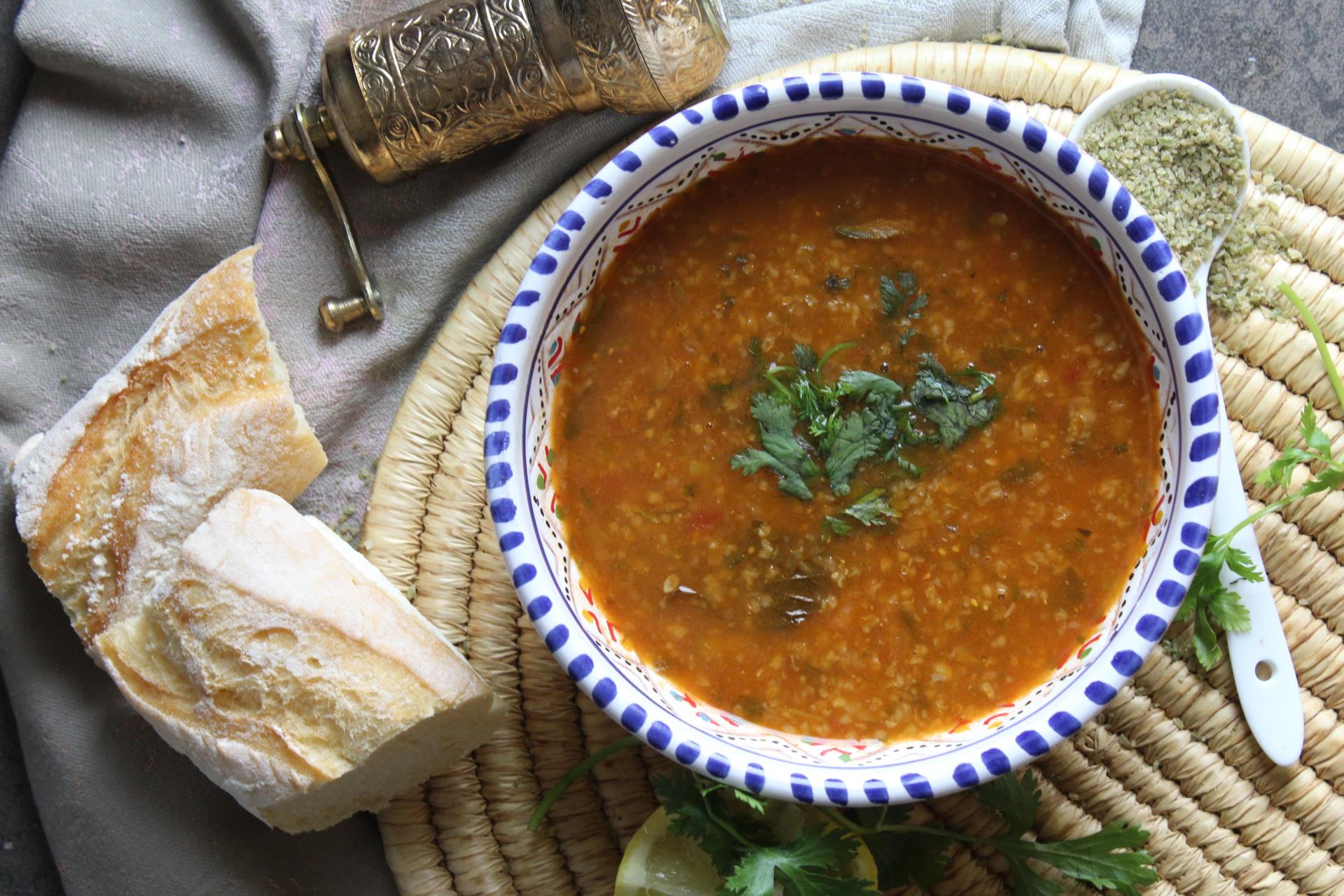
Ingredients
- Water to cover and soak the freekeh
- 3/4 pound lamb meat, cut into smaller cubes (1 1/2 inch)
- 1 onion, grated (you can also use three large scallions instead)
- 1 tsp ground black pepper
- 1 tsp paprika
- 1 tsp ground cinnamon
- 2 cloves of garlic
- Salt, to taste
- 3 tbsp vegetable oil (you can also use olive oil)
- 1 bunch fresh cilantro, finely chopped
- 1 bunch of fresh mint, finely chopped (you can also use dried mint)
- 1 celery stalk
- 1/2 can of chickpeas, drained
- 1 tbsp tomato paste (or puree)
- 1 zucchini, diced
- 1 carrot, diced
- 3 medium ripe tomatoes (or two large ones)
- 1 potato, skin peeled and diced
Method
- Place freekeh in a bowl and cover with cold water. Set aside.
- Add the lamb, onion, pepper, paprika, cinnamon, garlic, and salt in a pot. Add the oil, half of the cilantro, half of the mint and celery and simmer over a low heat for 15 minutes.
- When done, add in chickpeas and cover all of the ingredients with a little bit of water.
- Bring to a gentle simmer and then add the tomato paste, zucchini, and carrot and combine.
- Steam the tomatoes (you can also cook them in a pan if you don’t have a steamer) and soften them. This should take around five to seven minutes. When cooked squish the tomatoes and add the pulp to the soup – try and not add the skin where possible.
- Add in the potato and water to cover it and simmer again until the potato is soft. This will take around 10 to 15 minutes.
- Drain the freekeh and add it to the soup.
- Simmer the soup until the freekeh is soft for roughly 15 minutes and remove celery stalk before serving.
- When serving, sprinkle it with the other half of the cilantro and mint.
Qalb el louz
(Serves 9)
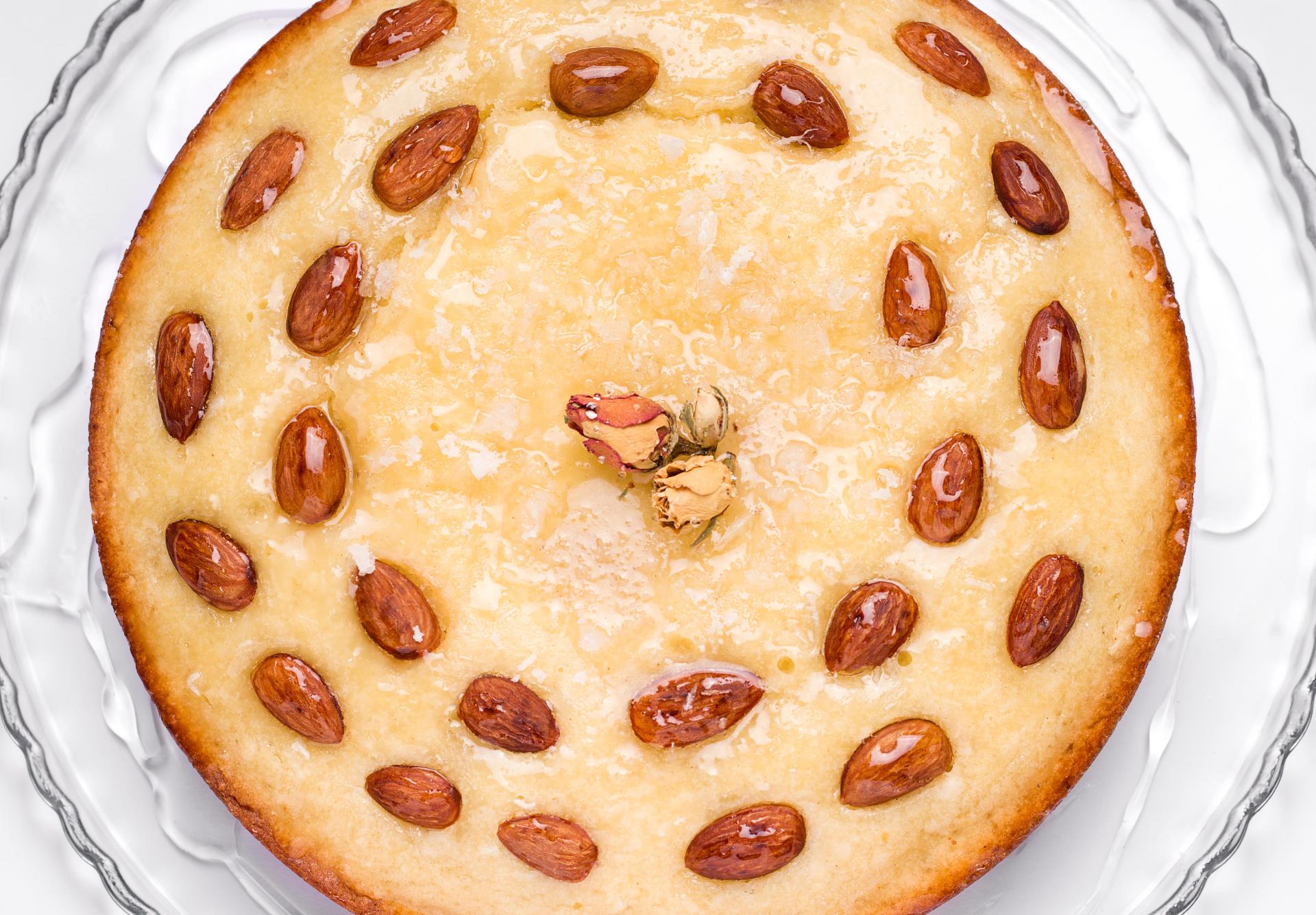
Ingredients
For the ‘cake’
- 500g coarse semolina
- 200g granulated sugar
- 75g butter, diced and softened
- 4 tbsp orange blossom water
- 4 tbsp water
For the filling
- 200g finely ground almonds
- 4 tbsp granulated sugar
- 3 tbsp orange blossom water
- 1 tsp ground cinnamon
For the syrup
- 1 litre water
- 500g granulated sugar
- 2 tbsp orange blossom water
- 1 slice lemon
- 150g honey
To decorate
- 9 almonds skin-on (You can add more almonds if you want)
- 100g butter, melted
Method
- Preheat the oven to 190°C/170°C/Gas 5.
- Grease a loose-bottomed cake tin (8 inches will work).
- For the semolina ‘cake’, stir in the semolina, sugar and melted butter in a bowl. Add in the orange blossom water mixing it until it combines.
- Make the almond filling by mixing the almonds, sugar, orange blossom water and cinnamon in a bowl. Set aside.
- Take the cold semolina mix and break it until it resembles small crumbs. Add in the water and distribute across.
- Place thin layers of the semolina ‘cake’ mix in the cake tin and the almond mix on top of one another. Smooth off the top of it with a spoon and use a knife to cut the cake lightly into nine slices.
- Place an almond on each slice and bake in the over for 45 minutes to an hour. It should be dark golden brown when ready.
- In the meantime, make the syrup. Add the water, sugar, orange blossom water, lemon and honey to a pan. Bring to the boil and stir until all of the sugar has dissolved. Reduce the heat once all the sugar is gone for roughly 10 minutes.
- Set aside to cool.
- Fully cut into the slices you made in the cake and drizzle the cooled syrup all over it. It is advised to leave it for a few hours for the syrup to soak into the ‘cake’ before serving. Enjoy!
